|
Native Plant of the Month
|
Aromatic Aster
Aster oblongifolius
Exposure: Sun
Blooms: August-October
Bloom Color: Purple
Height: 1-2 feet
Moisture: dry
Description:
A rhizomatous plant with a bushy appearance. Stems are stiff and slightly hairy. Each flower has many purple ray florets (20-35) surrounding the yellow disk florets and are
1" - 11/4" wide.
The leaves and flower heads release a balsam-like aroma when crushed. This is one of the last asters to bloom before frost. It is drought tolerant and grows best in dry, sandy prairies. Plant is food source for bees, butterflies, and moths. (syn. Symphotrichum oblongifolium
|
|
Invasive Species of the Month
|
Bittersweet Nightshade
Solanum dulcamara
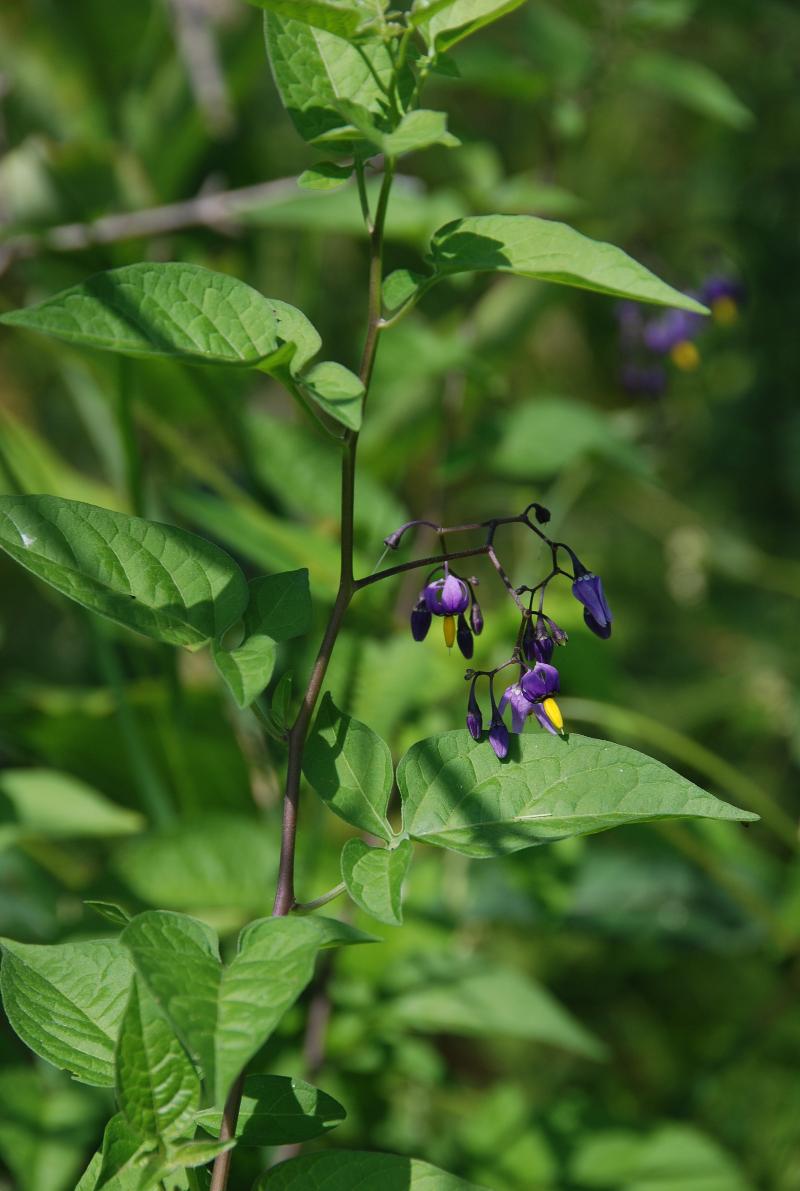
Exposure: Sun or Shade
Blooms: June-September
Bloom Color: Purple
Height: 2-8 foot vine
Description:
An aggressive perennial vine from Eurasia. At the base of the vine is a semi-woody stem. The flower is purple with petals that curl inward and has a yellow protruding center. Leaves are arrow-shaped and are lobed near the bottom. The seeds are green berries that turn bright red and are toxic to humans and livestock.Some birds are immune to the toxic berries and spread the seeds. Management strategies include spraying with herbicide and manual weeding. Also known as Deadly Nightshade, Climbing Nightshade, or Woody Nightshade.
|
| Pollinator of the Month |
Range: Most of North America
Description: A species of Digger Wasp, the Great Black Wasp, is a solitary wasp that builds a ground nest. These sheltered burrows are about a foot deep and in soft soils. It grows between 1 and 1.5 inches long and is all black with iridescent wings. Adult wasps feed on nectar while the larvae are fed paralyzed katydids and grasshoppers by the female. This wasp can sting but is rarely aggressive towards humans unless persistently provoked.
Pollination: Adult Great Black Wasps regularly visit Rattlesnake Master, Viriginia Mountain Mint, Culver's Root, and Milkweed species.
|
| Garden Club Tours! |
Natural Shore Technologies is now hosting FREE field trips for Garden Clubs with 10 or more members. Come join our Native Plant Specialist Shirley Mah Kooyman for a 1 hour lecture and tour of our retail nursery in Maple Plain! Your club will get an up close experience learning more about Minnesota Natives!
Choose from one of the following lectures:
- Minnesota's Native Plants: A Sampling for Your Garden
- Landscaping with Native Plants
- Top 30 Native Plants for your Garden
Call or email Shirley for more information at 763-464-8323 or at [email protected]
|
|
Noxious Weeds
When a weed goes from obnoxious to noxious!
Our maintenance crew works tirelessly hand pulling, weed whipping, and spraying weeds all season long to keep undesirable plants in native restorations under control. But are there some weeds that are worse than others and should take priority? You might have heard of the word noxious being used when referring to certain weeds, but what does that really mean? Then, once you know what the noxious weeds are, how do you keep them from spreading? Noxious weeds are designated by the Minnesota State Department of Agriculture as a plant that has the potential to be harmful to humans, animals, crops, livestock, property, transportation, or the environment. For example, Poison Ivy is a noxious weed because it gives people who come in contact with it a rash. Another example is Garlic Mustard and Spotted Knapweed which both produce chemicals that change the soil and make it less habitable for native bugs and plants. Leafy Spurge is on the list because it is toxic to livestock. Efforts must be done to control the spread, dispersal, and maturation of propagating parts of plants found on the noxious control list. Here are some examples of weeds we see often and take priority in controlling because they are found on that list: Canada Thistle, Garlic Mustard, Leafy Spurge, Purple Loosestrife, Spotted Knapweed, Common and Glossy Buckthorn, and Poison Ivy.
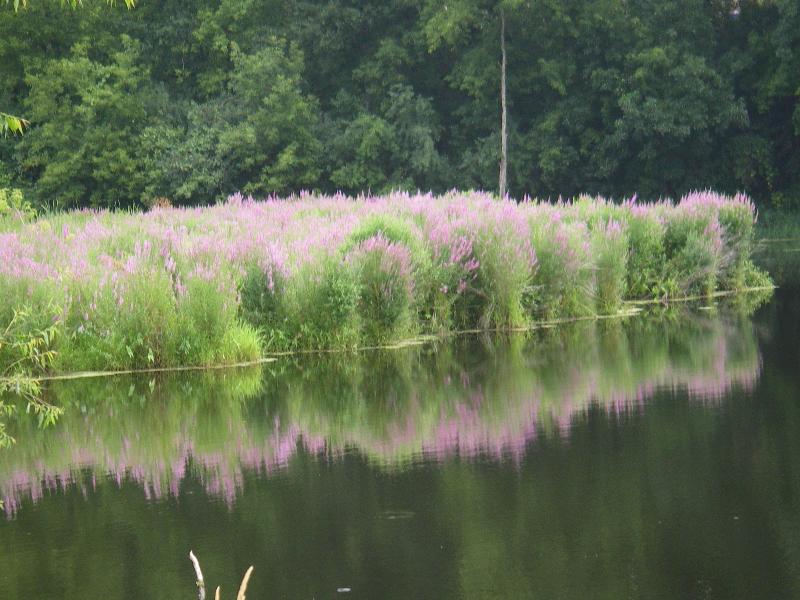 |
|
A dense Purple Loosestrife stand that chokes out rare or endangered wetland plants and creates habitat unsuitable for native wildlife
|
How does one stop the spread, dispersal, or maturation of propagating parts? There are several methods we use at Natural Shore Technologies, including both chemical and mechanical means of control. Because just one of these plants can potentially produce thousands of seeds in a year, preventing the plant from going to seed is the first goal. We do this by spraying the plant early with specific herbicides depending on the plant and site conditions. For example, we use a special type of herbicide safe for spraying near water. We also use another herbicide that will only kill plants with leaves and not harm native grasses. Another method of control involving herbicide is using a special concentration of chemical to spray on a cut stump of a noxious weed. Buckthorn and Purple Loosestrife are common victims of this method.
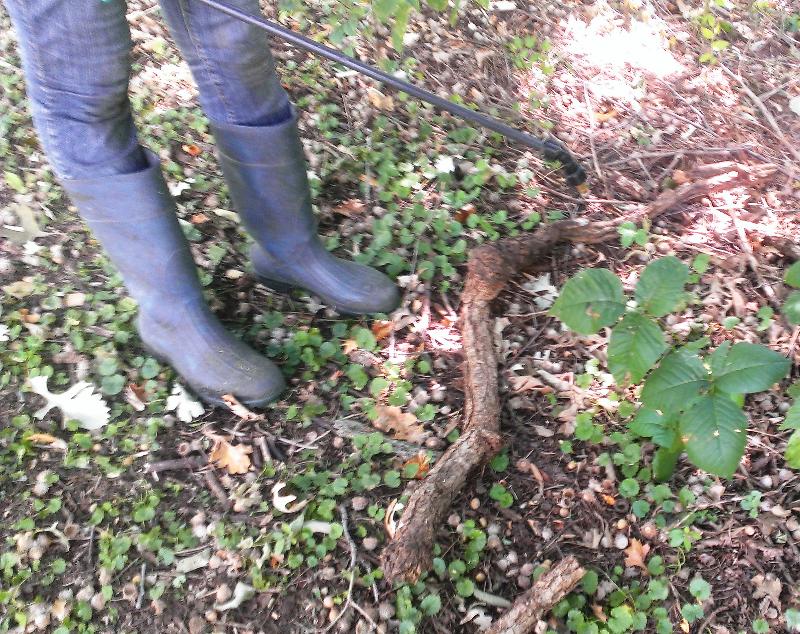 |
|
Spraying Poison Ivy with a broadleaf specific herbicide.
|
|
 |
|
Purple Loosestrife that has been cut at the base and sprayed with herbicide
|
|
We also use weed whipping as a method to prevent the plant from maturing to a point where it will form seeds. Hand pulling weeds can be time consuming but will ensure the plant is removed from the site before it goes to seed. If the plant does go to seed, the final resort is to cut the top of the head off, put the seeding parts into a garbage bag, and throw them away.
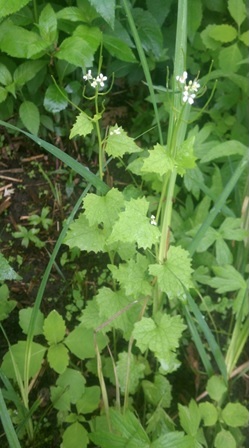 |
|
Garlic Mustard that has started to flower should be pulled before it goes to seed.
|
|
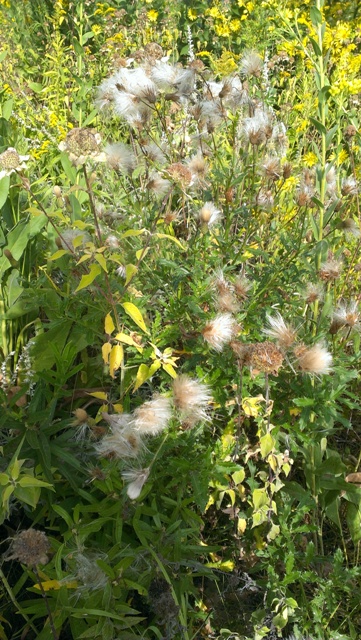 |
|
This Canada Thistle has already gone to seed and should be put into a bag to keep them from dispersing.
|
|
Keep a lookout for both the noxious and plain old obnoxious weeds in your restoration and rest assured we are on the hunt for them as well! There are more weeds on the noxious weed list, for more information Click HERE to visit the Minnesota Noxious Weeds List and be aware the list can change from year to year.
|
|
Retail Nursery Hours
|
COME TO OUR SEPTEMBER 25% OFF SALE!
Friday September 13th 12pm- 6pm
Saturday September 14th 9am-1pm
ALL REMAINING RETAIL NURSERY STOCK 25% OFF!! 5300 Hwy 12, Maple Plain
|
|
Employee Profile: Andy Lawler
|
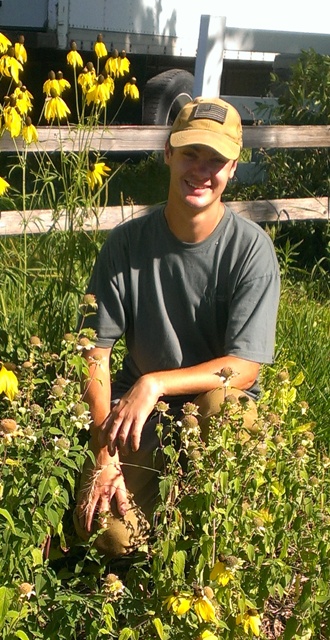
Andy has worked at NST for several seasons, having experience with both the installation crew last year and the maintenance crew this year. He is a student at Bemidji State University where he is working towards a degree in Wildlife Management. He hopes to use his native plant and shoreline restoration knowledge in a future career restoring critical habitat for Minnesota's native wildlife. Andy says his favorite part of working with NST is being outside and spotting the ducks, fish, and other wildlife using shoreline and prairie habitats we work in everyday. Some of his favorite pastimes are going up the his grandparent's cabin, hunting, fishing, and being outdoors.
|
|